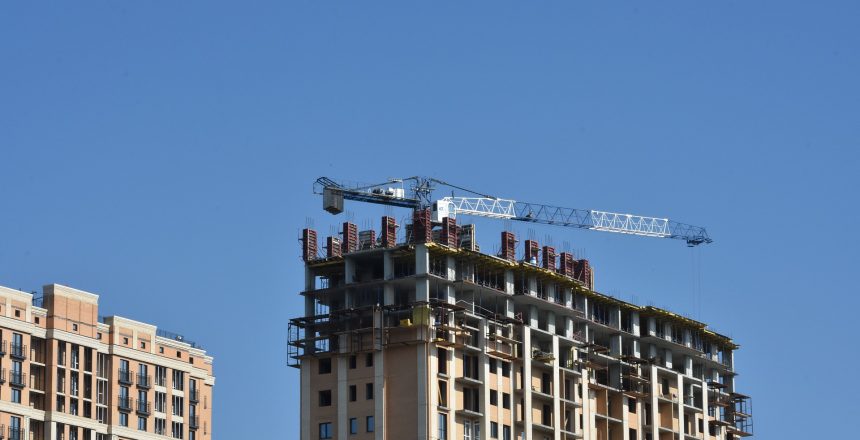Permitted development rights are a national grant of planning permission, whereby a property owner does not need to apply for planning permission for certain building works and developments to be carried out. Such work is determined by parliament, who subsequently create laws to provide property owners with permitted development rights. The most recent of which pertain to building additional storeys on top of blocks of flats in an attempt to deliver much-needed new homes across England.
Housing Secretary Robert Jenrick said: “We are reforming the planning system and cutting out unnecessary bureaucracy to give small business owners the freedom they need to adapt and evolve, and to renew our town centres with new enterprises and more housing.” He also expressed that the new right will ‘deliver new and bigger homes” and increase density “in line with local character and make the most of local infrastructure”.
While building upwards used to require planning consent, which involved checks on how well designs fit with nearby homes and the potential overshadowing of neighbouring properties, from 1st August 2020 this is all set to change. From then onwards, owners of existing detached, purpose-built blocks of flats will be allowed to build up to two additional storeys of residential accommodation on top of the block, without submitting a planning application. Furthermore, the new permitted development rights associated with these extensions include any reasonable engineering operations, access/egress (including external fire-safety routes) and storage and waste facilities.
Height restrictions
However, as with all permitted developments, a number of conditions and limitations have been stipulated in order to control impacts and to protect local amenity. These include;
- The additional storeys cannot exceed three metres in height or the height of any existing storey, whichever is lesser
- The overall height of the roof of the building must not exceed seven metres above the highest part of the existing roof
- The overall height of the building cannot exceed 30 metres (excluding plant)
Usage restrictions
- The new storeys must comprise flats
- The building must not be in mixed-use i.e. it must not contain shops or offices
Building restrictions
- The building must be a purpose-built block of flats, thus it cannot be a conversion
- It must be a detached building
- Construction of the building must have taken place between 1st July 1948 and 5th March 2018
- The extension must be on the principal part of the building
- The existing building must be at least three storeys high
Location restrictions (the building must not be located in)
- A national park
- A conservation area
- A world heritage site
- The Norfolk Broads
- An area of outstanding natural beauty
- Within three kilometres of the perimeter of an aerodrome
If the property does not meet the specifications, planning approval will need to be sought from the local council. However, block owners that do qualify for permitted development rights must still apply to the council for determination of whether prior approval will be needed, in respect of a range of aspects related to the proposed development. These include;
- The provision of adequate natural light in all habitable rooms of the proposed new flats
- The dimensions of each room in the flats in the proposed new storeys
The reasoning behind this condition of the permitted development is to try to address concerns that some homes previously created under existing permitted development rights have been found poorly designed and have lacked access to natural light.
But it doesn’t stop there. Property owners will also need to seek prior approval in relation to the following:
- Transport and highway impacts
- Air traffic and defence asset impacts
- Contamination risk
- Flood risk
- The external appearance of the building
- The impact of the existing building and neighbouring premises, including overlooking, privacy and loss of light
- Whether it will impact on a protected view
Permitted developments can also be subject to a Community Infrastructure Levy Charge if one is in effect. However, developments that commenced before 6th April 2013 or before a charging schedule was put in place will not be affected.
Property owners should also note that permitted development rights do not override the requirement to comply with other permission, regulation or consent regimes. Furthermore, permitted development rights can be limited or withdrawn under Article 4[1] by councils, whereby building owners will have to submit planning applications for affected works. This typically occurs when the character of an area of acknowledged importance would be threatened, for example, conservation areas.
Conversely, some permitted development rights cannot be removed under article 4, ensuring that rights related to national concerns, safety or maintenance work for existing facilities cannot be withdrawn. Last and by no means least, some permitted development rights are only in place for a limited period of time. Building owners will, therefore, need to check for updates to the conditions, limitations and any article 4 restrictions before they even consider a two-storey extension on their block.
Evidently, there are many hurdles to get over before adding additional storeys to a block of flats, even with permitted development rights. But that doesn’t mean that it hasn’t fallen under criticism and objection. In fact, an independent government report commissioned by the Housing Secretary revealed that homes created through permitted development are typically of a lower standard of quality than homes which go through the planning system.
The report, which identifies widely held concerns about permitted development states, “only 22.1 per cent of dwelling units created through permitted development would meet the nationally described standards, compared to 73.4 per cent of units created through nationally described space standards. Studio flats of just 16 metres squared each were found in a number of different permitted development schemes.” It goes on to say that all of the local planning officers interviewed for the report “had concerns about permitted development rights, usually most acutely in concern to the quality of developments that were being produced through it.”
Nevertheless, the law was still passed, and we can only hope that developers and property owners build acceptable new homes without having too much impact on neighbouring properties. Though, this could be a great and very practical solution for the lack of housing that we desperately need to rectify.
For any block owners considering adding an upwards extension to their building, it is crucial to confirm whether your proposed development is eligible for permitted development rights with your local council. You can find out whether you need planning permission and submit an application at planningportal.co.uk who will then provide you with a Lawful Development Certificate (LDC), should your development be deemed as a permitted development. If your application for an LDC is partly or wholly refused, you can appeal to the Planning Inspectorate.
A full copy of the new permitted development regulations can be found here: http://www.legislation.gov.uk/uksi/2020/632/regulation/22/made
[1] https://www.gov.uk/guidance/when-is-permission-required#article4
Do you know your health and safety obligations as a freeholder? Read our Freeholders guide to health and safety in blocks of flats


